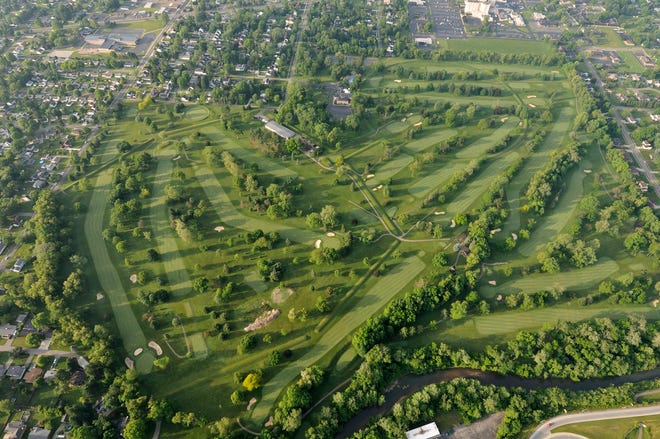Daniel Wilson, a distinguished 19th century Canadian archaeologist, first came to Newark in 1856. He wanted to see for himself the incredible earthworks described in the Smithsonian Institution’s first publication – “Ancient Monuments of the Mississippi Valley”.
The authors, Ephraim Squier and Edwin Davis, devoted seven pages of their book to Newark, but frankly admitted that these earthworks “are so complicated that it is impossible to give a comprehensible description of them”.
So Wilson came to Newark to see what he could do with it.
He later wrote the following about this first visit: “…after running a circuit of many miles, embracing the remarkable earthworks…all idea of mere combined work is lost in the higher conviction of ‘manifest skill and even science.’
Wilson was unaware of the deep knowledge of geometry and astronomy that we now know is encoded in the earthworks, but he recognized the science behind the scale, symmetry and precision of their design. and their construction.
He compared the Newark earthworks to “British Avebury” and “the Egyptian temples and avenues of sphinxes of Karnak and Luxor”, but he in no way suggested direct links between these wonders of the world. He knew of the Newark Holy Stones “and other similar productions of perverted American ingenuity”, which were then used, and are still used, as supposed evidence that various Old World civilizations and not Native American Indians actually built monumental earthworks. Wilson dismissed the Holy Stones and the other frauds as “the work of such illiterate, superficial rogues, that they hardly deserve to be noticed, except for the amount of discussion they have aroused, before let the gripping Civil War preoccupy the public mind with its harsh realities.”

My colleagues, local historian Jeff Gill, Jenn Bush, director of the Johnson-Humrickhouse Museum, and I agree with Wilson that the Newark Holy Stones are 19th century forgeries, but we disagree. agree that they are the work of illiterate and superficial rascals. Instead, we argued that they were scientific forgeries designed by well-educated, well-meaning men to undermine the racist polygenesis theory, which held that Native Americans and sub-Saharan Africans were sub-human and n were therefore not entitled to basic human rights.
Wilson was also opposed to this notion, at least insofar as it related to American Indians. He wrote that while it was “natural and reasonable for sixteenth-century men to believe” that America was peopled with “monstrosities” rather than “human beings like us”; but it was incredible “to see men of science still having difficulty in emancipating themselves from the idea”.
Gill, Bush and I also agree that concerns about an impending American Civil War have given the Holy Stones counterfeits particular urgency; and that the result of this war, the end of slavery, rendered them more or less irrelevant and so they largely escaped the public mind.
Wilson made several visits to Newark over the years and even became a corresponding member of the Licking County Pioneer, Historical and Antiquarian Society. He was fascinated by the earthworks of Newark with their “puzzling element of elaborate geometrical figures, executed on a gigantic scale by a people” who had no metal tools, “and yet displaying equal skill, in the execution of their geometric designs, that of the scientific land surveyor.
This puzzling element is one facet of our argument that the ceremonial earthworks at Hopewell have the Outstanding Universal Value required for inscription on the UNESCO World Heritage List alongside sites such as Avebury, Karnak and Luxor. .
Brad Lepper is the senior archaeologist for the Ohio History Connection’s World Heritage Program

